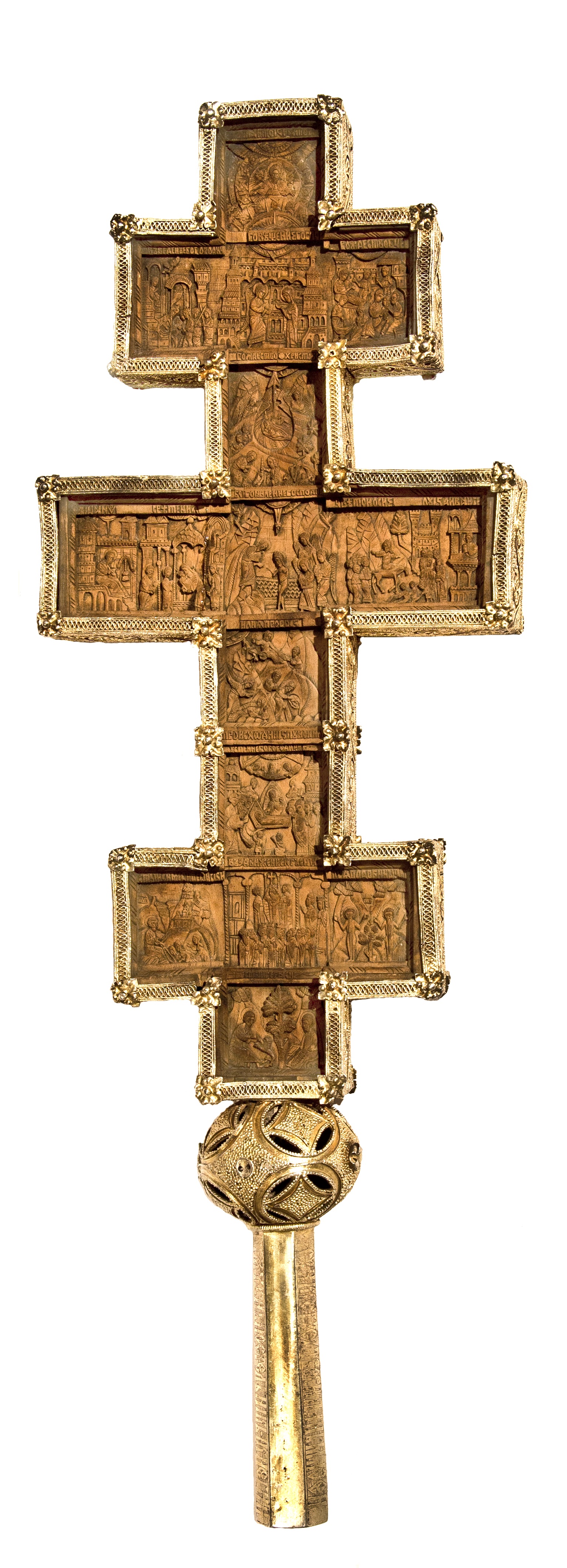In 1561, master Dosoftei, a monk at the Putna monastery, was ordered a cross for the church of the Slatina Monastery. Matei Crăciun, one of the highest ranking boyars in the country, and his wife Maria commissioned it as a gift for this church, recently founded by Prince Alexandru Lăpuşneanu of Moldavia, and his wife, Ruxandra.
The double-sided 50 cm-high cross has three arms, symbolic of the Crucifixion cross, whose upper arm contained the inscription Jesus of Nazareth, King of the Jews, and the small lower arm supported His nailed feet. The cross is carved in low relief on both sides and has a silver-mount decorated with filigree spiral vegetal motifs fixed at corners with rosettes. The sphere in the silver handle symbolizes the globe.
Each side of the cross contains 16 miniature scenes which recount Jesus’ life and Passions. These are supplemented by several scenes representing local legends which anchor the cross in 16th century Moldavian religious practice. Most scenes are set in or against a complex architectural background while several others are set in ample, suggestive landscapes. Both architecture and landscape strengthen and support the rich narrative while allowing the artist to convincingly conflate certain episodes.



